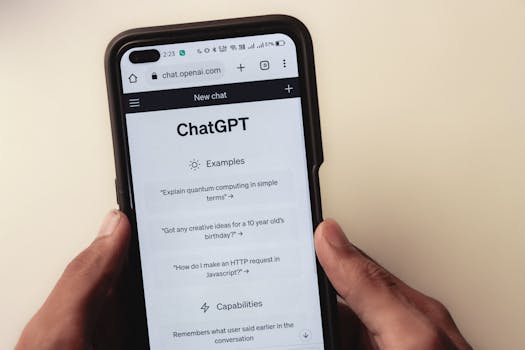In today’s AI-driven search world, your company’s online reputation becomes a major factor. This is beyond your Online Image of which I wrote about here. You may have noticed Google’s AI Overviews (AIOs) when you do a Google search. When it comes to Search Engine Optimization (SEO), Google is still the main, go-to search engine. However, it’s not the only game in town! Now, with the increased use of Artificial Intelligence (AI), especially the new AI search engines, like ChatGPT, Google Gemini, Perplexity, and others, searchers have alternatives.

These AI search tools are designed to respond to the query. In those search results, the search engine’s goal is to answer the question or deliver on the query with the most relevant answer or response.
Unfortunately, on most of the AI Search Engines, you get what are called “Zero-click” mentions. In other words, there are no links — at least not at this time. Remember, AI is constantly evolving and constantly learning. That’s why you should be constantly producing content. Unfortunately, sometimes they are learning bad content. Obviously, there is wrong information and bad opinions everywhere. You need to provide truthful, honest content following Google’s E-E-A-T principles.
Nevertheless, when a potential customer is searching for what you have to offer, what comes up in these AIOs is critical. If they like what they see, they’ll keep scrolling and eventually find your business’s website—if you’ve optimized everything for SEO and have the content searched for.
What if you’re in a highly competitive industry? How do you get your business’s name, location, and website to come up in the top of these AI search engines?
The new big factor is your Online Reputation, and online reviews play a critical role, now more than ever!
More than Just Google Reviews!
First, keep in mind that AI cannot and does not have an opinion. Thus, it looks for reviews, comments, and recommendations from all over the Internet. Other people’s opinions.
Think of online reviews as today’s word-of-mouth recommendations on steroids. Trust is the biggest driver. People buy from those they know and trust.
Star ratings are important. You always want to shoot for the 4 or 5-star review. The average star count not only helps a searcher choose a business, but people also use it to rule out a business that has less than a 4-star average. Having only 5-star reviews actually looks suspicious.
Naturally, AI relies on what customers write about your business. And it looks everywhere.
What is Review Velocity?

How often are you getting Google Reviews? Simply put, review velocity is how often you get new reviews. Average review velocity will vary from business to business. For instance, a self-storage facility probably won’t have a review velocity like a restaurant or a retail store. Your review velocity will depend on your type of business, your frequency of sales, and your customer base.
Stars and Placement
Why does a business with 4.5 stars get a higher placement in the Google Maps Local-Pack than your business, which has 4.6 stars? Look at how many reviews they have and then the frequency. If you’re up against one of the big players, you have your work cut out for you. More on that in a bit.
What is AI Search Looking For?
Going back to the trust factor, AI is looking for mentions of your business in other places besides Google Reviews. That is, social media (Facebook and Reddit), online local magazine citations and listings, local bloggers, as well as third-party sites like Yelp.
For example, if you sponsor a local event or do community work, ask them to tag or mention you on social media, in any publication, or on their website.
This is hyper-local public relations (PR). This is vital not just for local businesses, but it also helps with your overall online reputation.
Additionally, click-through rates to your website play a part. How often do people click over to your website from search results? That’s where titles and meta descriptions come in.
Specifically, Google notices the E-E-A-T — that is, Experience, Expertise, Authority, and Trustworthiness of a review. That’s a review where the customer states that he or she was there, why they were there, how your business fulfilled their needs, and how satisfied they were.
If you’ve been getting bad reviews, then you need to focus on customer service and the overall customer experience. That starts when a potential customer first touches anything regarding your business. Usually, that begins with your website’s User Experience (UX) and User Interface (UI).
Some Strategies to Increase Review Velocity
Boosting review velocity for your business is definitely doable—it just takes the right blend of timing, tech, and a human touch. Here’s a strategic playbook to get more reviews flowing in:
- Ask at the Right Moments: Have a sign or flyer at the front desk or checkout with the QR code of your Google Business Profile (GBP) Reviews. You can get that from your GBP. Besides that, send an email or SMS (text message) within 24–48 hours of the end of a sale or service while the experience is still fresh.
- Automate with a Personal Touch: Use CRM tools or industry software to trigger review requests automatically. Keep the message friendly and personalized: mention whatever the customer bought or the type of service they received, your name, and a quick thank you. See the sample template below.
- Make It Easy: Include direct links to your Google, Facebook, or Yelp review pages—don’t make them search. Use QR codes on the receipts, emails, or signage.
- Engage & Respond Publicly: Reply to every review, even the short ones. It shows you’re listening, which encourages others to write in. A warm, witty response can inspire second-time reviewers, too. If you do get a bad review or complaint, respond quickly with a fix. Diffuse the bad, encourage the good.
- Train Your Team: Empower managers and front-line staff to remind customers in person if you’re a local brick-and-mortar business. Give team members incentives for every genuine review collected as part of their service interactions. Ask the customer to mention a team member who stood out to them.
- Keep Active on Your Google Business and Social Media Profiles: The appearance of the owner or manager in pictures is important. Post events like community participation.
Here’s a sample template for an email to request a review:
Subject: Thanks for choosing [Business Name] — We’d love your feedback!
Body: Hi [Customer Name], Thanks again for choosing [Business Name]! We hope your experience was smooth and stress-free. If you have a moment, would you mind sharing your thoughts in a quick review? Your feedback helps others find us—and helps us keep getting better.
[Insert link and/or the QR code here]
It only takes a minute, and we truly appreciate your time. Thanks for being part of our storage family!
Warm regards, [Your Name], [Position], [Contact Info]
Once you get it set up and your staff trained, this should become a regular, ordinary task. You’ll want to check your Google Analytics and the Google Search Console monthly to track your progress and see if your efforts are making a difference.
Don’t forget to add your reviews to your website with a tool like TrustIndex (affiliate link).
As you can see, competing in digital marketing these days is complex. Need help with this? Let’s schedule a FREE 15-minute Zoom Call at your convenience, and we can brainstorm ideas.









